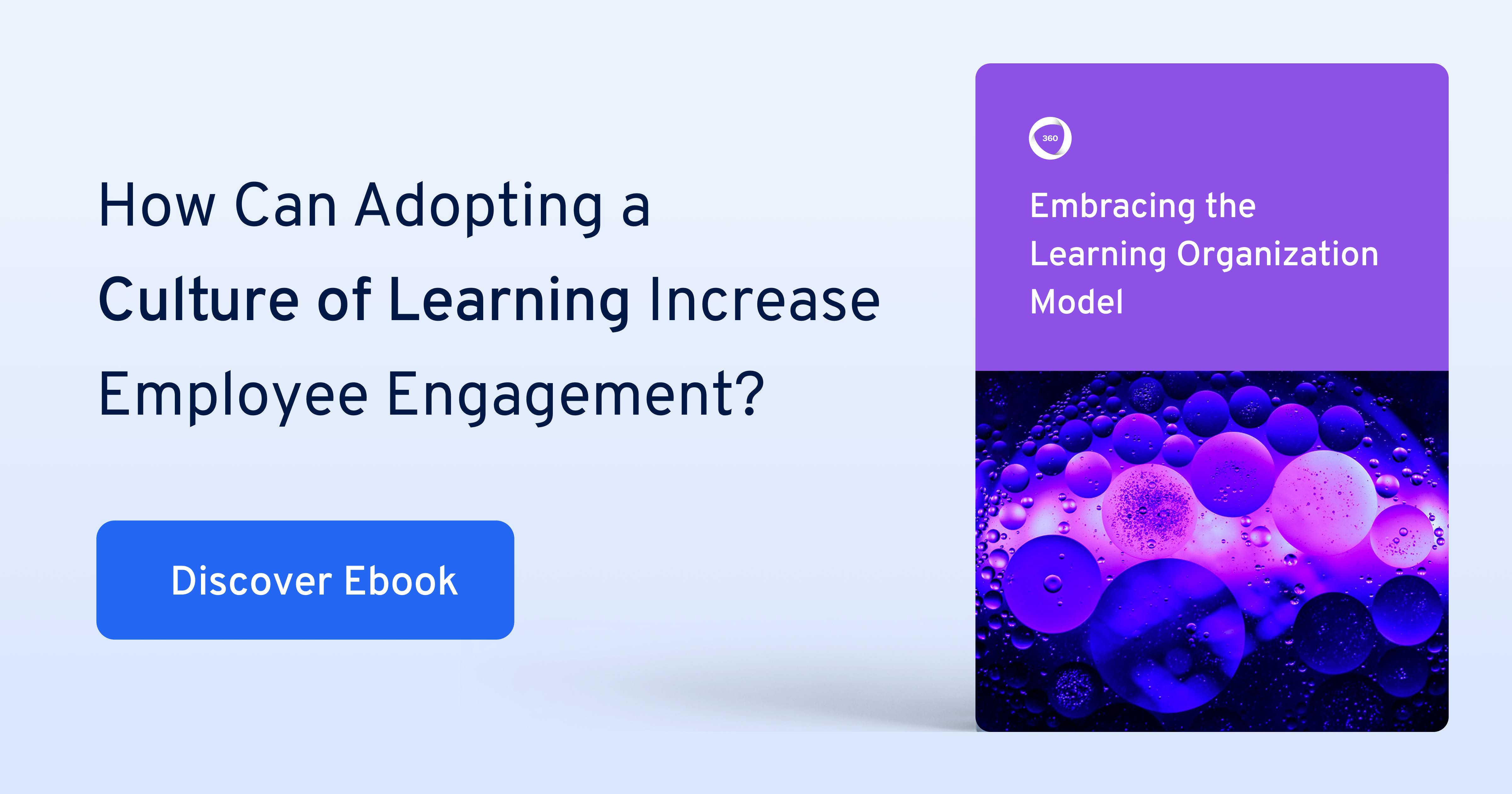
Your Complete Guide to Human Capital Management—How HCM Can Transform Your Workforce
Companies that win best places to work awards year after year have one thing in common—they put their people first by empowering employees, emphasizing learning and development, encouraging collaboration, and making their people’s well-being a priority.
Those initiatives are all part of Human Capital Management, which puts people at the center of decisions made in the workplace and creates a winning strategy for employees and organizations.
What is Human Capital?
Human Capital is what makes organizations tick. In the context of the workplace, it’s the collective skills, abilities, and knowledge of your employees and how they use those resources to create value for your organization. Human Capital is the most important asset of any company—without your people’s abilities, you would cease to exist.
Human Capital can include people management, communication, and problem-solving skills—every employee in an organization provides some form of Human Capital to their company at any given time.
What is Human Capital Management?
Human Capital Management (HCM) is a term used to describe the act of strategically investing in the development of your people and their skills to drive engagement and business value. It’s an advanced approach to Human Resource Management (HRM) that focuses on your employees’ skill sets, competencies, and training needs.
HCM fills the gap in traditional people management strategies by viewing employees as stakeholders who invest their Human Capital into a company to generate more wins for the company. This philosophy results in a more equitable balance between employees and employers. HCM allows organizations to invest in their people through training and development, and in return, employees use their Human Capital to drive more revenue and fulfill company goals and objectives.
With HCM, employees aren’t viewed as an administrative speed bump for employers—they’re an essential investment that drives personal, team, and organizational growth. A well-executed HCM strategy will align your employees’ skills and effort with your larger business goals while creating an environment where individual employees feel comfortable, engaged, and have confidence they can grow.
HCM generally includes the following functions:
- Payroll and compensation
- Recruiting, hiring, and onboarding
- Workforce planning
- Career development
- Mentoring
- Performance management
- Training and development
- Wellness
The differences between HCM and HR
Traditional Human Resource Management tactics are no longer enough to generate the best returns for your company. HRM was originally designed to handle personnel management administrative tasks, but HR’s role in managing people has significantly grown to include the strategic management of employees.
The line between HRM and HCM has become a bit blurry in recent years because the future of work demands that companies create the best possible employee experience. HCM’s functions overlap with traditional HR duties—they’re both tasked with supporting operations like recruiting, headcount planning, and creating strategic goals, but HRM systems mainly handle records management, compliance, and policies and procedures. In contrast, HCM goes beyond traditional HRM by factoring in business goals and working within HR systems and processes to address the needs of employees so they can reach their fullest potential.
How HCM can transform your workforce
HCM has become a crucial part of building a competitive workforce in an economy that has become highly dependent on advanced skills. When employees are better prepared, they deliver more successful results, so it’s probably no surprise that HCM’s equitable approach results in multiple benefits for both employees and your organization.
Having an HCM strategy in place can benefit your company in the following ways:
Improves communication
HCM will create stronger, more collaborative relationships across your entire organization. When employees know what is expected of them and what they should expect from your company, the flow of communication significantly improves.
Achieves your business goals faster
By aligning your mission and goals with everyone inside your organization, you reduce unnecessary effort because employees can easily see what needs to be done to advance your company’s goals.
Enhances employee engagement
One of HCM’s top priorities is ensuring everyone in your organization is driving toward the same goals. When your people feel their purpose is aligned with your company’s vision, your employees will be more engaged.
Boosts employee satisfaction and retention
When you take the time to understand your people’s needs and career goals and put energy into giving them the tools and learning opportunities they need to excel, your employees will be happier and stay with your company for more extended periods.
Improves recruiting efforts
HCM creates an atmosphere that’s very attractive to potential employees. When it’s obvious your company genuinely cares about its employees, you’ll attract top talent.
Forges a stronger culture
Company culture is dynamic and requires constant nurturing. HCM can help define and steer your culture by being the source of truth for your company’s mission and values by setting up a structure where everyone operates a shared set of beliefs.
The right way to nurture your Human Capital
Becoming a people-first organization may require some significant shifts in your processes, but operating without a strategic plan for managing your Human Capital could leave you with high turnover rates, unhappy employees, missed revenue goals, or worse.
If your HCM strategy is half-heartedly executed, it’s going to fall flat. Instead, you will need to walk the walk by making noticeable changes that show your commitment to putting your employees first. For example, Zappos gives new employees four weeks to decide if it’s a good fit after putting them through a new-hire training onboarding process. If the new employee doesn’t think Zappos is a good fit after those four weeks, they can quit their job with a month’s pay. This may seem like a risky strategy, but Zappos’ head of HR credits this policy with helping them save money and hire fantastic people.
If you’re serious about developing an HCM strategy, you can start with these high-impact initiatives:
Make training the star of your HCM strategy
The two core tenants of HCM are investing in your employees and aligning your employees’ skills and efforts with business goals. Training is the key to accomplishing both.
Developing your existing talent is one of the most important investments you can make. It drives growth and enables employees to achieve their goals, which will ultimately positively affect your business goals. In addition, your employees are likely looking for more training opportunities—94% of employees in one study said they would stay at a company longer if it invested in their learning efforts.
Your HCM strategy should include a plan for shifting to an active and continuous learning model. By creating a continuous learning culture where employees are always improving their knowledge, your people will adapt faster to changing needs, and you’ll see a rise in employee engagement. Then, once you’ve created a good foundation, work toward becoming a Learning Organization by prioritizing learning at all times—you can learn more about how to transform into a Learning Organization in our dedicated ebook:
To start things off right, your Learning and Development and HR departments or teams need to come together to find the knowledge gaps inside your organization and discover what your high-performing teams are doing differently. When the research phase is complete, they can collaborate to create courses that align with the skills your employees need and relevant courses employees want to take.
Related: 4 Reasons Why L&D Is Crucial for Your Talent Management Strategy
Use HCM software to make more time for employee development
HCM software can go a long way toward giving your HR department the time to connect with employees to find out what they need to be more effective and satisfied with their job. One study shows that HR spends 73% of its time on administrative tasks, which means your HR people aren’t spending enough time nurturing your Human Capital.
HCM software automates time-consuming processes, which paves the way for implementing an HCM strategy. You can simplify your software systems by switching to an HCM platform or suite that can combine HR and HCM data to manage HR items like hiring and payroll and HCM areas like employee engagement and productivity.
It’s important to do your homework before choosing a new system so you know upfront what you want and need it to accomplish. Josh Bersin, Human Resources Advisor, notes, “Think about a new HCM system like moving into a new house.” When looking at new houses, you home in on new features you don’t currently have, like a bigger yard or fancier kitchen. But there are always trade-offs, and once you move in, it takes some effort to make the house look and feel like your own.
Make sure your HCM software includes the following features:
- Integration with your current systems and software, including payroll, taxes, and benefits administration
- Analytics and reporting features
- Secures data encryption for privacy and compliance
- Recruitment and compensation management capabilities
- Talent life cycle management, including sourcing and onboarding
- Goal management
Integrate well-being into your workplace
Your people’s well-being can have an outsized impact on your business—if your employee’s well-being is in decline, they’re at greater risk of burning out. Well-being initiatives are designed to create happier and more resilient employees by offering programs that can positively impact mental and emotional health. Addressing your people’s well-being by offering benefits like Employee Assistance Programs EAPs and meditation apps is a big step in the right direction, but their impact can leave a lot to be desired. For instance, less than 10% of employees will ever use their EAP benefit.
Your employees want you to prioritize their well-being, and they want you to help them while they’re at work. For example, one study notes that 85% of employees who have well-being benefit options feel more positive about their employer.
Integrating well-being into the workplace sounds like a big task, but there are a lot of ways your company can get started:
- Forming Employee Resource Groups (ERGs) can make employees feel seen and heard and facilitate mentorship opportunities by bringing people with similar experiences together.
- Seeking out and removing processes and policies that make it harder for people to do their job. For example, getting rid of outdated policies or complicated processes.
- Reduce the number of meetings and encourage written communication like email or Slack messages as an alternative.
- Promote asynchronous work to reduce context switching, which slows down productivity.
- Encourage employees to take time off to recharge their mental health, offer unlimited paid time off, or take collective time off. Companies like Bumble, Mailchimp, and LinkedIn are implementing collective time off to get ahead of burnout risks.
HCM is the answer to HR’s biggest challenges
According to PwC’s 2020 HR Technology Survey, some of HR’s most common challenges are finding, attracting, and retaining talent, helping employees reach their full potential, and creating a collaborative workplace. These are the same challenges HCM strategy solves. Therefore, the more strategic and people-first your approach to HCM, the happier and more productive your workforce will be.


